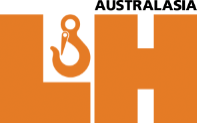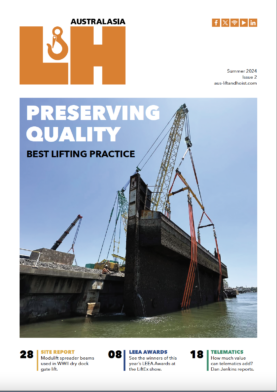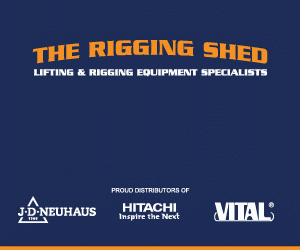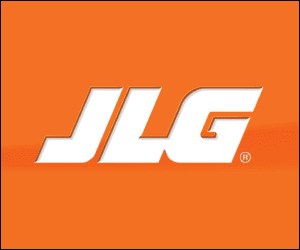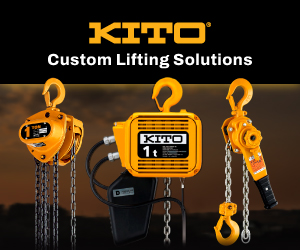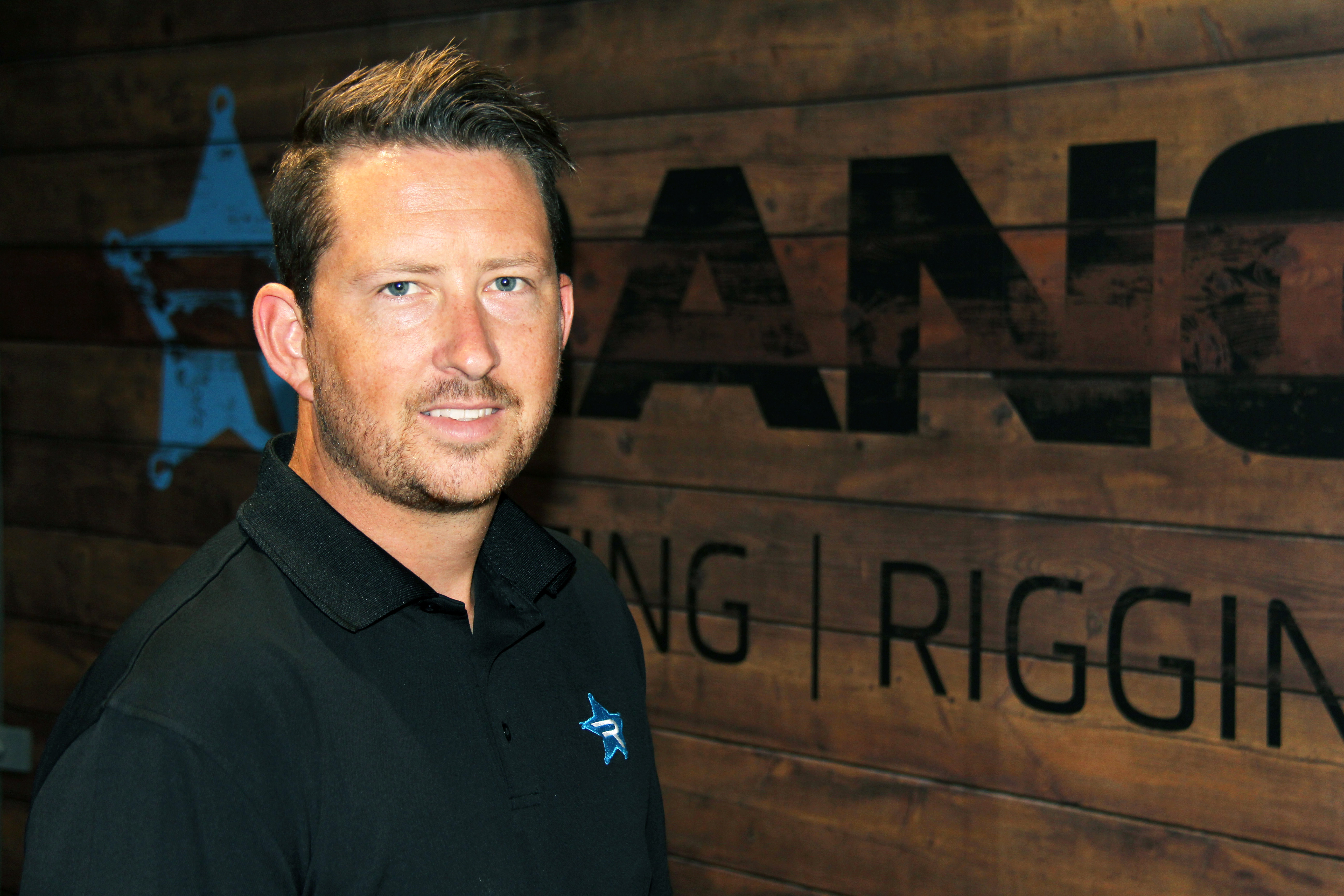)
Certified lifting equipment
You can’t just put a sticker on an item of lifting or rigging equipment and call it certified. But there are things that you can do to meet the required standards. There are also a couple of different standards that you should be looking at, advises Ashley Thacker of Ranger Lifting.
We are often asked about certifying lifting gear that’s already in the field, whether it be dated, makeshift, imported or otherwise. Recent examples are:
A-frames for lifting glass or marble
Grabs for lifting stone
Site cages/stillages for lifting equipment onsite
Hooks for specialised applications where off-the-shelf items don’t work
Forklift jibs
Spreader bars and lifting beams
We’ve seen all kinds of equipment submitted for certification, from homemade horror stories to products that went on to pass a proof-load or engineering analysis test, no problem. The trouble with makeshift-style products is that they’re just that, and no standards have been taken into account during design or manufacture. Safety factors have been disregarded and the stringent design criteria that should have been adhered to were overlooked. Sometimes standards are followed but if they were only relevant overseas, it doesn’t make the product certified here in Australia (we’ll come back to this).
Makeshift products are rarely drawn up using state-of-the-art computer-aided design (CAD) nor have they been put through a finite analysis programme to see if they would hold up to the task, and to identify the stress or failure points. The welding is usually poor, but even if the welding is done by a qualified and ticketed welder, the welds are rarely checked by way of non-destructive testing. In many examples, we’ve noticed paint has been used to cover over problems. Makeshift products are often unmarked as well.
Consider the risks posed by such equipment, to both the users and manufacturers or suppliers. At the point of use, it goes without saying that the products are unsafe, whether they are used internally in a workshop or warehouse, or out onsite where subcontractors, pedestrians, workers and others might all be placed in danger. If the piece of equipment is lifting or moving a product, then whatever is being lifted is also at risk. A $50k piece of marble or custom-made glass being lifted by an uncertified and unchecked A-frame, is an expensive disaster waiting to happen. Then there are the risks to the supplier that will be culpable.
We will look at Australian Standard AS 4991 Lifting Devices, as that is commonly applied here, for obvious reasons. However, as we’ll examine first, International Standard ISO 17096: Cranes — Safety — Load lifting attachments is more current and is actually our go-to document when we’re looking at certifying lifting equipment.
ISO 17096 says for single unit designed and produced products, type verification and individual verification shall be done. For series produced, product type verification shall be done on one or more representative products of the series and the individual verification shall be done on each product produced.
How to get equipment certified
In AS 4991, two methods of certifying lifting equipment are given:
- Proof load testing
- Engineering analysis
Proof load testing
AS 4991 gives the criteria, depending on the working load limit (WLL) of the product:
Up to a 10t WLL: 2 x WLL
From 10t to 160t WLL: 1.04 x WLL + 9.6t
Above 160t: 1.1 x WLL
ISO 17096 gives guidance on proof of fatigue strength by testing. The test arrangement shall produce stress variation that corresponds to the maximum and minimum vertical load events. This includes that all clamping forces are released between each work cycle. The design number of working cycles of the lifting device shall not be taken greater than one third of the average life of at least three tested devices. Where not more than seven devices are tested, the design number of working cycles shall not be greater than one half of the minimum life found in the tests.
Engineering analysis
AS 4991 says:
A non-load-applying test regime should involve all of the following:
(i) Third-party design analysis
(ii) Material identification and non-destructive examination of welds
(iii) Castings and other appropriate non-destructive examination
Which method to choose depends on the specific requirements, as ISO 17096 says. If it is a serially-manufactured product, versus a one-off device, more optimised design brings down production costs, which leads to certification by design to be the preferred method.
The size, WLL and type of equipment the product is designed to lift are considerations too. Lifting devices for large, awkward or heavy loads may require specialised equipment to be developed to complete testing, raising the costs associated. Old or existing equipment without documentation is generally easier to certify via testing. Friction, magnetic or vacuum gripping tools may require type testing or proof load testing if certifying by engineering analysis.
Remember, proof load testing doesn’t take into account failure by fatigue so should not be used where fatigue may be an issue.
As ISO 17096 adds, the WLL of the lifting attachment, hazard warnings and safety instructions shall be legibly marked on the product. The WLL of the lifting device shall be marked on the main structure where it is visible. Where the lifting device is made up of several lifters, each detachable from the group, these lifters shall also be marked with their individual loads.
Overseas conundrum
Let’s expand on the manufactured overseas issue because this is common. If a client is bringing equipment in from another country for, say, $2k and they could have sourced it locally for $3k, our advice is always to buy it locally. The saving just isn’t worth the risk. If the item is made locally with correct drawings and procedures from the start, there is no risk of the product not being able to be certified and deemed fit for use.
If a client is bringing in $500 items from overseas that would be $3k locally, then that’s a different story. We accept that they will look to the cheaper option, but we suggest they get them reverse engineered upon arrival, and a full set of documents raised.
A local rigging company can load test the products to ensure each one is structurally sound and give the client a load test certificate. Be mindful, though, that you should never state that a product is made in compliance with an Australian standard if it isn’t. In most cases the client requires the item to be compliant to Australian standards to get it approved onsite and signed off on by the relevant workplace health and safety representative.
Remember, you can’t just put a sticker on an item of lifting or rigging equipment and call it certified.
How well do you know International Standard ISO 17096: Cranes — Safety — Load lifting attachments and Australian Standard AS 4991 Lifting Devices?
Third-party design analysis
Beyond achieving certification to put a product to use, there are other reasons to get a third party to review a product design. Yes, this process comes at a cost but, as we explored in the main body of this article, there really isn’t any point in taking unnecessary risks. Here are the top three benefits to using a third party to complete engineering design analysis:
- Improve quality
A product is only as strong and safe as the materials and methods used to make it. A third-party review can detect non-compatibility, improper installation and other manufacturing oversights or shortcomings. It also adds another layer of accountability for peace of mind as the third-party reviewer is also culpable should there be a problem in future.
- More expertise
An engineering analysis puts another set of expert eyes on a product. An engineer might draw the same conclusions as a peer, but they might also add something that wasn’t considered before. This promotes continued improvement of design, manufacturing, use and maintenance best practices. Engineers can also apply experience that they have gained on other analysis and inspections, perhaps from another industry or product sector.
- Cut construction costs
An experienced design review engineer can detect ways that manufacturing and construction costs can be slashed, perhaps by noting wasted materials or redundant design features. It might be that a non-compliant code was unnecessarily used. Catching these things before designs are submitted to a client can save time and money.
Remember, a design should be certified by a registered professional engineer, and an independent reviewer must be qualified.
